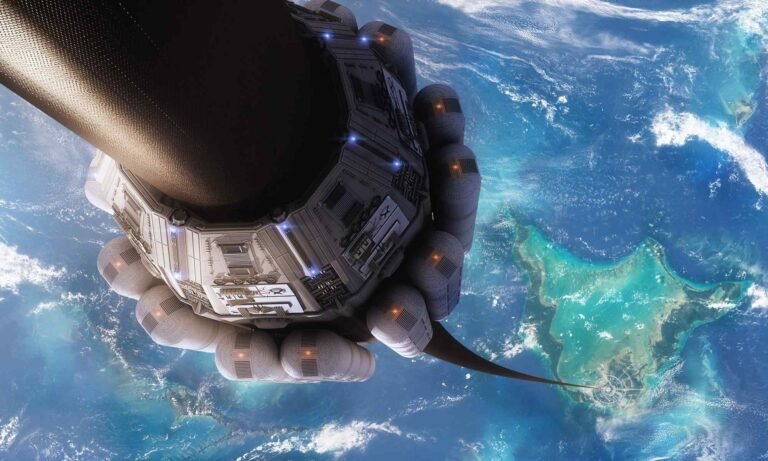Interstellar traveling, also known as interstellar space travel, refers to the hypothetical concept of traveling between stars within a galaxy. This idea has captured the imagination of scientists, writers, and enthusiasts for many years. The challenges associated with interstellar travel are immense, primarily due to the vast distances involved.
One of the key obstacles is the sheer scale of interstellar distances. Even to reach the nearest star system, Alpha Centauri, would require travel at a significant fraction of the speed of light. Additionally, the energy requirements, potential time dilation effects, and the need for sustained life support over such long durations present formidable challenges.
Various theoretical concepts for interstellar travel have been proposed, including advanced propulsion systems, space-time manipulation, and even the idea of sending tiny robotic probes to neighboring star systems. While interstellar travel remains firmly in the realm of science fiction for now, ongoing research and technological development continue to inspire discussions about the future possibilities of reaching out to other stars by exploring space.
Space exploration has always captured the imaginations of people around the world. The advancements in technology, international collaboration, and private sector involvement have all contributed to an exciting era in space exploration.
The involvement of private companies like SpaceX, Blue Origin, and Virgin Galactic has revolutionized space exploration. They are driving advancements in rocket technology, satellite deployment, and even the potential for commercial space travel. Their innovations have contributed to making space more accessible and cost-effective.
The Methods
Interstellar travel poses a significant challenge due to the vast distances involved. Several theoretical and conceptual methods have been proposed for interstellar travel, although many of them remain firmly in the realm of science fiction. Some of the proposed interstellar traveling methods include:
- Generation Ships: These are enormous self-sustaining spacecraft designed to travel for multiple generations until reaching the destination. They would need to provide everything required for human habitation, including food, water, and a complete ecosystem.
- Warp Drive: A concept popularized by science fiction, the warp drive would involve manipulating spacetime to “warp” the fabric of space, effectively allowing a spacecraft to travel faster than the speed of light.
- Solar Sails: This method involves spacecraft propelled by radiation pressure from a distant light source. By utilizing the momentum of photons, solar sails could theoretically reach high speeds over time.
- Nuclear Pulse Propulsion: This theoretical concept involves detonating nuclear explosions behind a spacecraft to propel it forward. While highly effective in terms of thrust, the technical and safety challenges remain significant.
- Black Hole Starships: Theoretically, it might be possible to harness the energy of a black hole for propulsion, utilizing its extreme gravitational forces to slingshot a spacecraft towards distant stars.
- Antimatter Propulsion: By annihilating matter with antimatter, an enormous amount of energy can be released. The main challenge lies in producing and containing significant quantities of antimatter.
- Alcubierre Drive: Another speculative concept, the Alcubierre drive proposes the distortion of spacetime around a spacecraft, allowing it to “ride” a wave of compressed space to accelerate to superluminal speeds.
IXS Enterprise
The term “IXS Enterprise” refers to a conceptual design for a faster-than-light (FTL) spaceship, proposed by NASA physicist Dr. Harold White.
The concept draws inspiration from the Star Trek universe’s starship designs, particularly the USS Enterprise.
The IXS Enterprise aims to explore the feasibility of warp drive technology, which theoretically could allow a spacecraft to travel faster than the speed of light by warping space-time.
Read More
Conceptual Basis
The IXS Enterprise is grounded in theoretical physics, particularly the concept of the Alcubierre drive. Proposed by physicist Miguel Alcubierre in 1994, this theoretical model suggests that a spacecraft could achieve FTL travel by contracting space in front of it and expanding space behind it, effectively moving the spacecraft through a “warp bubble.”
Design and Structure
The design of the IXS Enterprise was developed with the help of conceptual artist Mark Rademaker. Key design features include:
- Warp Rings: These large, ring-like structures are designed to encircle the spacecraft and would theoretically house the exotic matter needed to create the warp bubble. These rings are crucial to the warp drive mechanism.
- Sleek Hull: The spacecraft’s body is designed to minimize friction and resistance, drawing inspiration from the aerodynamic shapes seen in science fiction vessels like the Star Trek series’ USS Enterprise.
- Habitable Sections: The design includes sections where the crew would live and work, designed for long-duration missions.
Scientific Feasibility
While the concept is fascinating, there are several significant scientific and engineering challenges to address:
- Exotic Matter: The creation and stabilization of exotic matter, which has negative energy density, are required to form and maintain the warp bubble. Currently, exotic matter remains hypothetical and has not been observed or created in a practical form.
- Energy Requirements: Initial calculations suggested that the energy required to create a warp bubble would be greater than the mass-energy of the observable universe. Dr. White’s refinements have suggested ways to reduce this to more manageable levels, but it remains an enormous challenge.
- Engineering Challenges: Building and controlling the mechanisms needed to generate and manipulate a warp bubble are far beyond our current technological capabilities.
Current Research
NASA’s Eagleworks Laboratories, where Dr. White conducts his research, focuses on the theoretical underpinnings and potential experimental setups that could one day lead to breakthroughs in warp drive technology. This includes:
- Mathematical Modeling: Refining the equations and theoretical models that describe warp bubbles and how they might be generated and sustained.
- Small-Scale Experiments: Conducting experiments to detect possible microscopic warp effects or related phenomena, although practical FTL travel remains a distant goal.
Cultural Impact
The IXS Enterprise has captivated the imagination of the public and the scientific community alike, symbolizing the human aspiration for interstellar exploration. It bridges the gap between current scientific understanding and the bold visions presented in science fiction.
Conclusion
The IXS Enterprise represents a bold and imaginative step towards realizing the dream of interstellar travel. While rooted in theoretical physics, significant scientific and technological advancements are needed before such a concept could become a reality. The project continues to inspire and drive forward the frontiers of space propulsion research.
Though these methods are largely theoretical or firmly in the domain of science fiction, they continue to inspire researchers and writers alike. As our understanding of physics and technology advances, who knows what the future holds for interstellar travel.
Interstellar travel presents significant challenges for the human body. The prolonged exposure to microgravity, cosmic radiation, and isolation can have detrimental effects on human physiology. Muscular atrophy, bone density loss, and vision problems are some of the known consequences of extended space travel. Additionally, the long-term effects of cosmic radiation on human DNA make interstellar travel a daunting prospect for the biological well-being of astronauts. Developing advanced life support systems, radiation shielding, and propulsion technologies is crucial for ensuring the safety and health of humans during interstellar journeys through the universe.
Space Travel
The Universe can be defined as everything that exists, everything that has existed and everything that will exist.
According to our current understanding, the Universe consists of spacetime, forms of energy (including electromagnetic radiation and matter) and the physical laws that relate them.
The Universe encompasses all of life, all of history and some professionals suggest that it even encompasses ideas such as mathematics and logic.
Space travel, as envisioned by Elon Musk, holds the potential to change the future of humanity in a number of ways.
One of the key impacts of space travel is that it would allow us to expand our horizons beyond Earth. This would provide us with access to new resources, new frontiers for scientific research, and new places to live in the case of a catastrophic event on our home planet. Moreover, space travel would help us to better understand our place in the universe, and could lead to new discoveries that would impact our understanding of science, physics, and technology.
Another important impact of space travel is that it would help to increase our technological capabilities. The process of designing, building, and launching spacecraft would require us to solve complex problems and create new technologies, which would then have spin-off benefits for other areas of human endeavor. For instance, the development of reusable rockets, which is one of the key innovations of SpaceX, has already led to a reduction in the cost of space launches and could have applications in other industries such as air travel.
Moreover, space travel would also help to foster international cooperation. The process of exploring and colonizing other planets would require the collaboration of multiple countries and organizations, which would help to break down barriers and foster a sense of unity among the people of the world. Finally, space travel would provide us with a new sense of purpose and a new frontier to explore. This would inspire future generations to pursue careers in science, technology, engineering, and mathematics (STEM) and to take an interest in the future of our planet and our species.
In conclusion, space travel and Elon Musk’s vision to make humanity a multi-planetary species holds the potential to change the future of humanity in a number of ways. From expanding our horizons beyond Earth, to increasing our technological capabilities, fostering international cooperation, and providing us with a new sense of purpose, the future of space travel is bright and holds the promise of a better future for all of us.
What’s More

My Blog (61)
Dependence (5) Fiction (7) Karma (6) Landmarks (4) Paramount (6) Poignancy (5) Spectrum (6) Spotlight (6) Take Off (5) Unique (5) Virtue (6)
Amazing Stuff (9) Beyond Known (8) Controversial (9) Digital World (9) Inequities (8) Innovative (8) Metaphysics (8) Our Society (9) Outer Space (8) Value Creation (9) Yearnings (8)












